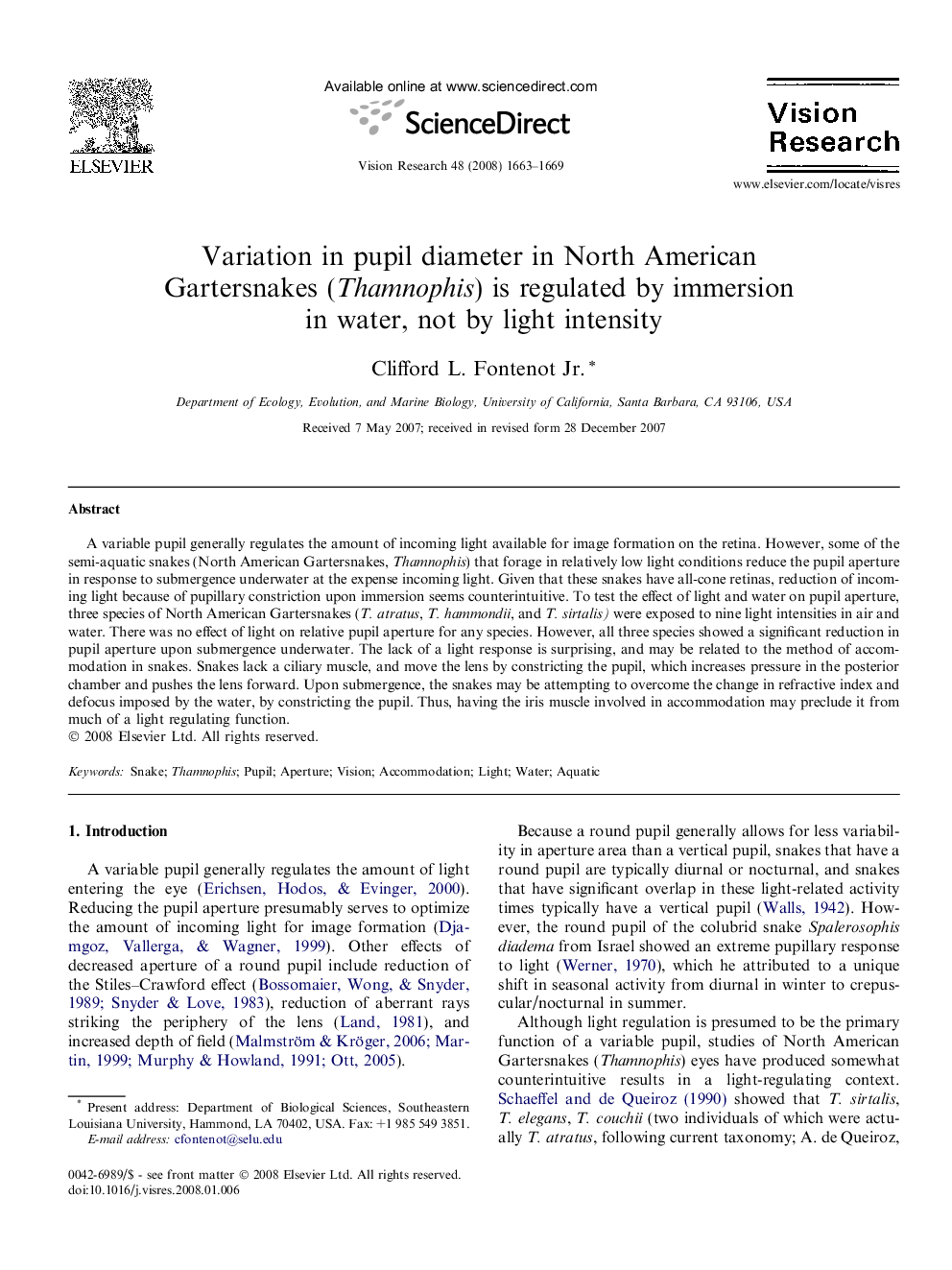| Article ID | Journal | Published Year | Pages | File Type |
|---|---|---|---|---|
| 4035037 | Vision Research | 2008 | 7 Pages |
A variable pupil generally regulates the amount of incoming light available for image formation on the retina. However, some of the semi-aquatic snakes (North American Gartersnakes, Thamnophis) that forage in relatively low light conditions reduce the pupil aperture in response to submergence underwater at the expense incoming light. Given that these snakes have all-cone retinas, reduction of incoming light because of pupillary constriction upon immersion seems counterintuitive. To test the effect of light and water on pupil aperture, three species of North American Gartersnakes (T. atratus, T. hammondii, and T. sirtalis) were exposed to nine light intensities in air and water. There was no effect of light on relative pupil aperture for any species. However, all three species showed a significant reduction in pupil aperture upon submergence underwater. The lack of a light response is surprising, and may be related to the method of accommodation in snakes. Snakes lack a ciliary muscle, and move the lens by constricting the pupil, which increases pressure in the posterior chamber and pushes the lens forward. Upon submergence, the snakes may be attempting to overcome the change in refractive index and defocus imposed by the water, by constricting the pupil. Thus, having the iris muscle involved in accommodation may preclude it from much of a light regulating function.
